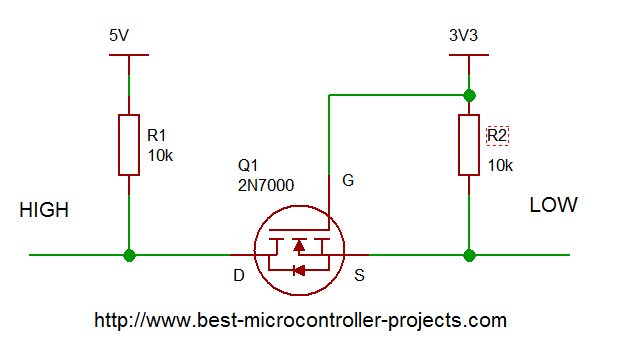

Alternatively, wires can be soldered directly to the board for more compact installations. The strip can be broken into smaller pieces and soldered in so the board can be used with perfboards, breadboards, or 0.1″ female connectors.
#LOGIC LEVEL SHIFTER IC SERIAL#
Using the 4-channel bidirectional logic level shifter to create a serial connection between a 5 V Arduino Uno and a 3.3 V Raspberry Pi.Ī 0.1″-pitch male header strip is included for use with this board. The picture below shows a level-shifted TTL serial connection (RX and TX) between a 5 V Arduino Uno and a 3.3 V Raspberry Pi. (Some competing level shifter modules provide ground connections that simply act as a pass-through we have opted to leave these off and make the board smaller.) The two devices being connected through the level shifter must still share a common ground. The level shifter circuit does not require a ground connection to either device, so there are no ground pins on the board. Logic low voltages will pass directly from Hx to the corresponding Lx (and vice versa), while logic high voltages will be converted between the HV level to the LV level as the signal passes from Hx to Lx or Lx to Hx. The HV supply must be higher than the LV supply for proper operation.

This logic level converter requires two supply voltages: the lower-voltage logic supply (1.5 V to 7 V) connects to the LV pin and the higher-voltage supply (LV to 18 V) connects to the HV pin.


 0 kommentar(er)
0 kommentar(er)
